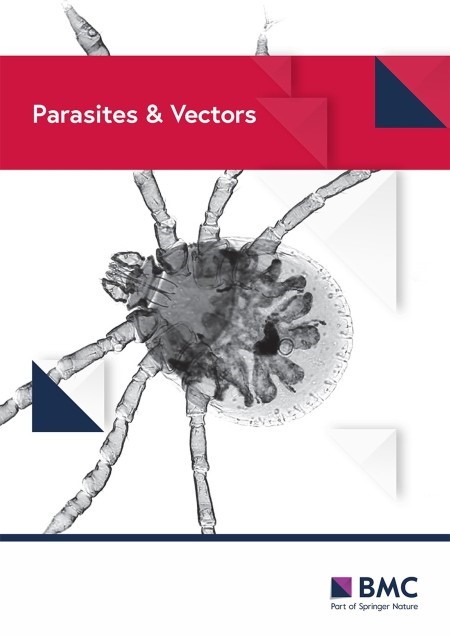Description and molecular characterisation of Babesia ailuropodae n. sp., a new piroplasmid species infecting giant pandas
Lang Xiong and Guangyou Yang

Abstract
Background
Babesia spp. are protozoan parasites that infect the red blood cells of domesticated animals, wildlife and humans. A few cases of giant pandas (a flagship species in terms of wildlife conservation) infected with a putative novel Babesia sp. have been reported. However, comprehensive research on the morphological and molecular taxonomic classification of this novel Babesia sp. is still lacking. This study was designed to close this gap and formally describe this new Babesia sp. infecting giant pandas.
Methods
Detailed morphological, molecular and phylogenetic analyses were conducted to characterise this Babesia sp. and to assess its systematic relationships with other Babesia spp. Blood samples from giant pandas infected with Babesia were subjected to microscopic examination. The 18S ribosomal RNA (18S rRNA), cytochrome b (cytb) and mitochondrial genome (mitogenome) of the new Babesia sp. were amplified, sequenced and assembled using DNA purified from blood samples taken from infected giant pandas. Based on the newly generated 18S rRNA, cytb and mitogenome sequences, phylogenetic trees were constructed.
Results
Morphologically, the Babesia sp. from giant pandas exhibited various forms, including round to oval ring-shaped morphologies, resembling those found in other small canine Babesia spp. and displaying typical tetrads. Phylogenetic analyses with the 18S rRNA, cytb and mitogenome sequences revealed that the new Babesia sp. forms a monophyletic group, with a close phylogenetic relationship with the Babesia spp. that infect bears (Ursidae), raccoons (Procyonidae) and canids (Canidae). Notably, the mitogenome structure consisted of six ribosomal large subunit-coding genes (LSU1-6) and three protein-coding genes (cytb, cox3 and cox1) arranged linearly.
Conclusions
Based on coupled morphological and genetic analyses, we describe a novel species of the genus Babesia, namely, Babesia ailuropodae n. sp., which infects giant pandas.
Citation: Xiong, L., Yang, G. Description and molecular characterisation of Babesia ailuropodae n. sp., a new piroplasmid species infecting giant pandas. Parasites Vectors 17, 315 (2024).
Read full text: https://parasitesandvectors.biomedcentral.com/articles/10.1186/s13071-024-06402-6?utm_source=xmol&utm_medium=affiliate&utm_content=meta&utm_campaign=DDCN_1_GL01_metadata#citeas
